On World Disability Day, Heena Khandelwal meets two visually challenged superstars: Sristi KC and Pranav Lal, who are living out their dreams despite much tribulation
Kathmandu-based Sristi KC did not let her disability be the decision maker in her life after she lost her sight at 16. She continued to pursue her studies and hobbies. Now, a decade later, she holds a Master's degree in Dance Anthropology from Europe, is a dance instructor, performer, motivational speaker, and the founder of Blind Rocks — an NGO teaching dance to the visually impaired across the world.
"I love dancing. As a child I would imitate performers on TV and would also participate in dance competitions," says the now 26-year-old Sristi, who was in class 10 when she was prescribed steroids for more than the required period. As a result, she contracted glaucoma and eventually turned blind completely. "When I lost my vision, I didn't want to stop doing what I was doing earlier. When I tried to enroll in a dance school, I was told it would be time-consuming and complicated to teach me."
But Sristi, passionate about dance, didn't let such rejections get to her. Instead, she used her existing knowledge about Nepali and Bollywood dance to teach herself choreography. She was also curious about other visually challenged people and began researching about professions and hobbies that they opted for. "I found that pursuing a career in computers was their safest bet as it ensured employment. Those who took to singing and playing instruments, their bodies were very stiff," says Sristi, who started out by teaching body movements, hand gestures and blinking of the eyes.
It was a leadership summit at Kerala in 2012 that inspired her to start her own venture. In 2014, she registered her NGO, Blind Rocks. "I was shocked after I lost my vision. It was then that I decided, 'no more shocking, it should be rocking'," says Sristi, who believes that dance doesn't require a set formula. "It is free. That's what I tell other blind people. Use your imagination and creativity."
She uses her hands to demonstrate every dance step, which her students hold onto to study the movement and her instructions. "And sometimes they perform the step and I touch their hands to check if they are doing it right.
Not all participants are comfortable when I suddenly touch their legs. So, I tell them to think that their hand is their foot. Then I place their hand on the ground and teach them the step. It's a hand-to-leg manipulation. I also associate instructions with everyday actions one performs. So I tell them 'open the door and close it', or 'sweep the floor' to explain a movement."
In such a scenario, how does synchronisation work? As a solution, Sristi has developed dance jewellery. "These jewellery pieces are meant to be worn on the head, wrist, hip and ankle. Each piece makes a different sound. This way, these body parts become 'audible' to me. That's how I supervise. It's a new concept and I am still developing it," she says.
It's her persistence and ability to disregard rejections and insensitive comments and to change every 'can't' to 'can' that keeps her going. Though, in the beginning, she admits it was tough. "More than my blindness, it was the comments that started to come my way – 'What will you do?', 'Oh, now she can't study', 'She can't do this' and so on. There were so many can'ts and don'ts. It was frustrating," says Sristi, who used these comments to change her narrative. In the years to come, she received an award from the President for being the first visually impaired person in her university to walk without a cane, dance without vision and operate computers with proficiency.
"Computers change everything. It makes blind people super independent. You can read and write, email, search for anything on the Internet... I wouldn't have been able to pursue my Master's had it not been for the computer," she tells us.
Along with the challenges come the stereotypes such as the blind do not care about fashion. "Shopkeepers have tried to sell me outdated clothes or ones that'd cover my body. Like everyone, I too like dressing up!" she wonders. "I did need assistance in the beginning, but can anyone really function without any assistance?" Touche.
More about Sristi
1) Sristi has taught and performed in Russia, Hong Kong, Polland, France, UK, Korea, Germany, Norway and Hungary.
2) She began choreographing dance steps by listening to every nuance of a song — the lyrics, music and beats.
3) She teaches basic Nepali dance moves to other visually challenged people so they can dance and enjoy at parties.
4) Sristi collaborates with international NGOs to conduct workshops, while the NGO takes care of her travel, food and accommodation
*********************

(Clockwise) Pranav Lal wearing his wireless eye; the view from Reykjavik Harbour; Kerið, an extinct volcano in Iceland; the Blue Lagoon Spa in Iceland
Pranav Lal is a 39-year-old self-taught cyber security expert in South Delhi. He is also an avid photographer, who loves to travel and captue beautiful landscapes.
Lal introduces his photography equipment: a headgear with an artificial eye. The eye scans the room and a bone-conduction microphone starts giving signals to a back-end software, which analyses this data and feeds it to his brain. This software is called vOICe (OIC stands for for 'Oh I See'), invented by Dutch physicist Peter Meijer, who made it possible for the blind to perceive a shape or object at a distance.
"It is a combination of three factors – panning, pitch and volume," explains Lal who has been visually impaired since birth. "Panning tells me where the object is in horizontal view of the camera. So if the object is to my left, I can hear it through the left headphone. Pitch represents height — higher the pitch, the higher the object. Volume represents brightness. Brighter the object, louder the volume. This information I consume through bone-conduction headphones," says Lal, who read about this software in 1999 and started pursuing photography in 2000-01.
Pranav uses a mobile phone camera. He feels a DSLR is wasted on him because he only uses autofocus and other auto-settings. Clearly, it is not easy. There are plenty of blurred pictures on his blog (techesoteria.com), where he also writes about technology, but that doesn't bother him. "I enjoy composing a shot and that's where my job and interest ends," he says adding that he relies on people with sight to sort the images and caption them. Lal's love for photography also resonates with his love for travelling. He's fond of both, the mountains and the ocean, and enjoys capturing landscapes. Going on a long cruise and seeing a volcano are desires that top his wishlist at present.
Lal has always been fascinated by technology. "I have always used technology, right from telling time to dismantling things to understand how they work. As a result, several birthday presents ended getting smashed up," says Lal, who grew up with audio books and wrote essays on typewriters before he was introduced to computers that changed everything. "Now, I can write as well as read, which was not possible with a typewriter," he says. Even better was being introduced to the Internet in 1999 as he found it exciting to forge connections across the world. "I read many bestsellers, including Rudyard Kipling and Harry Potter, online. It was then that I built my collection of novels, which is about 3GB," says Lal who has self-published a couple of novels and science-fiction books, besides running three blogs, There's praanavwrites.com, where he blogs about his books; techesoterica.com, where he shares his experiences with technology; and security-writer.com, which is about cyber security.
Earning his education qualifications was no cakewalk. "I wanted to study science, but I had to opt for commerce because the system was not geared to cater to a visually challenged individual. So I studied science on my own. Now, I am a self-taught computer programmer," says Lal, who graduated from Delhi University's Shaheed Bhagat Singh College and then completed an MBA. One of his activities include building gadgets, including an object like a tablet.
A major challenge, like all singletons, is finding a companion. "Usually what society does is marry a disabled person with another disabled person. Apart from arranged marriages, one otherwise meets their someone in school, college or office and that hasn't happened with me yet," says Lal.
Lal doffs a hat to NGOs who constantly working to empower the blind. "If you are willing to shell out money, you can lead a pretty good life even without vision. Challenges increase only when you don't have the right support. Luckily, there are NGOs who give you this support with computers and work towards making you independent."
And his life is testimony to that.
Not just a photographer
1) Pranav has learnt swimming and martial arts.
2) He loves trying new restaurants and can scramble and boil eggs.
3) He has a few self-published books to his credit.
4) He started writing fiction and now focuses only on sci-fiction thrillers.
5) Lal has also tried his hand at what "I thought was romance, but I flopped".
![submenu-img]() 'Baap re baap': Imtiaz Ali reveals Diljit Dosanjh was scandalised by old women's 'vulgar' improvisation on Chamkila set
'Baap re baap': Imtiaz Ali reveals Diljit Dosanjh was scandalised by old women's 'vulgar' improvisation on Chamkila set![submenu-img]() Viral video: Man educates younger brother about mensuration, internet is highly impressed
Viral video: Man educates younger brother about mensuration, internet is highly impressed![submenu-img]() Taiwan detects seven Chinese military aircraft, five naval vessels near its waters
Taiwan detects seven Chinese military aircraft, five naval vessels near its waters![submenu-img]() This actor, who worked with Karan Johar and Farhan Akhtar, gave superhit shows, saw failed marriage, killed himself at..
This actor, who worked with Karan Johar and Farhan Akhtar, gave superhit shows, saw failed marriage, killed himself at..![submenu-img]() Girl's wedding dance to Haryanvi song interrupted by mother in viral video, internet reacts
Girl's wedding dance to Haryanvi song interrupted by mother in viral video, internet reacts![submenu-img]() DNA Verified: Is CAA an anti-Muslim law? Centre terms news report as 'misleading'
DNA Verified: Is CAA an anti-Muslim law? Centre terms news report as 'misleading'![submenu-img]() DNA Verified: Lok Sabha Elections 2024 to be held on April 19? Know truth behind viral message
DNA Verified: Lok Sabha Elections 2024 to be held on April 19? Know truth behind viral message![submenu-img]() DNA Verified: Modi govt giving students free laptops under 'One Student One Laptop' scheme? Know truth here
DNA Verified: Modi govt giving students free laptops under 'One Student One Laptop' scheme? Know truth here![submenu-img]() DNA Verified: Shah Rukh Khan denies reports of his role in release of India's naval officers from Qatar
DNA Verified: Shah Rukh Khan denies reports of his role in release of India's naval officers from Qatar![submenu-img]() DNA Verified: Is govt providing Rs 1.6 lakh benefit to girls under PM Ladli Laxmi Yojana? Know truth
DNA Verified: Is govt providing Rs 1.6 lakh benefit to girls under PM Ladli Laxmi Yojana? Know truth![submenu-img]() Streaming This Week: Heeramandi, Shaitaan, Manjummel Boys, latest OTT releases to binge-watch
Streaming This Week: Heeramandi, Shaitaan, Manjummel Boys, latest OTT releases to binge-watch![submenu-img]() Remember Ayesha Kapur? Michelle from Black, here's how actress, nutrition coach, entrepreneur looks after 19 years
Remember Ayesha Kapur? Michelle from Black, here's how actress, nutrition coach, entrepreneur looks after 19 years![submenu-img]() Remember Heyy Babyy's cute 'Angel' Juanna Sanghvi? 20 year-old looks unrecognisable now, fans say 'her comeback will...'
Remember Heyy Babyy's cute 'Angel' Juanna Sanghvi? 20 year-old looks unrecognisable now, fans say 'her comeback will...'![submenu-img]() In pics: Arti Singh stuns in red lehenga as she ties the knot with beau Dipak Chauhan in dreamy wedding
In pics: Arti Singh stuns in red lehenga as she ties the knot with beau Dipak Chauhan in dreamy wedding![submenu-img]() Actors who died due to cosmetic surgeries
Actors who died due to cosmetic surgeries![submenu-img]() DNA Explainer: Why Harvey Weinstein's rape conviction was overturned, will beleaguered Hollywood mogul get out of jail?
DNA Explainer: Why Harvey Weinstein's rape conviction was overturned, will beleaguered Hollywood mogul get out of jail?![submenu-img]() What is inheritance tax?
What is inheritance tax?![submenu-img]() DNA Explainer: What is cloud seeding which is blamed for wreaking havoc in Dubai?
DNA Explainer: What is cloud seeding which is blamed for wreaking havoc in Dubai?![submenu-img]() DNA Explainer: What is Israel's Arrow-3 defence system used to intercept Iran's missile attack?
DNA Explainer: What is Israel's Arrow-3 defence system used to intercept Iran's missile attack?![submenu-img]() DNA Explainer: How Iranian projectiles failed to breach iron-clad Israeli air defence
DNA Explainer: How Iranian projectiles failed to breach iron-clad Israeli air defence![submenu-img]() 'Baap re baap': Imtiaz Ali reveals Diljit Dosanjh was scandalised by old women's 'vulgar' improvisation on Chamkila set
'Baap re baap': Imtiaz Ali reveals Diljit Dosanjh was scandalised by old women's 'vulgar' improvisation on Chamkila set![submenu-img]() This actor, who worked with Karan Johar and Farhan Akhtar, gave superhit shows, saw failed marriage, killed himself at..
This actor, who worked with Karan Johar and Farhan Akhtar, gave superhit shows, saw failed marriage, killed himself at..![submenu-img]() Did you know Ranveer Singh's grandmother was popular actress? Worked with Raj Kapoor; her career affected due to...
Did you know Ranveer Singh's grandmother was popular actress? Worked with Raj Kapoor; her career affected due to...![submenu-img]() India's highest-paid TV actress began working at 8, her Bollywood films flopped, was seen in Bigg Boss 1, now charges...
India's highest-paid TV actress began working at 8, her Bollywood films flopped, was seen in Bigg Boss 1, now charges...![submenu-img]() Shreyas Talpade wonders if his heart attack was due to Covid vaccine: 'We don’t know what we have taken inside...'
Shreyas Talpade wonders if his heart attack was due to Covid vaccine: 'We don’t know what we have taken inside...'![submenu-img]() IPL 2024: Faf du Plessis, Virat Kohli help Royal Challengers Bengaluru defeat Gujarat Titans by 4 wickets
IPL 2024: Faf du Plessis, Virat Kohli help Royal Challengers Bengaluru defeat Gujarat Titans by 4 wickets![submenu-img]() IPL 2024: Why is Sai Kishore not playing today's RCB vs GT match?
IPL 2024: Why is Sai Kishore not playing today's RCB vs GT match?![submenu-img]() 'Mumbai Indians ki kahani khatam': Ex-India star slams Hardik Pandya after MI's loss to KKR at Wankhede
'Mumbai Indians ki kahani khatam': Ex-India star slams Hardik Pandya after MI's loss to KKR at Wankhede![submenu-img]() LSG vs KKR, IPL 2024: Predicted playing XI, live streaming details, weather and pitch report
LSG vs KKR, IPL 2024: Predicted playing XI, live streaming details, weather and pitch report![submenu-img]() LSG vs KKR IPL 2024 Dream11 prediction: Fantasy cricket tips for Lucknow Super Giants vs Kolkata Knight Riders
LSG vs KKR IPL 2024 Dream11 prediction: Fantasy cricket tips for Lucknow Super Giants vs Kolkata Knight Riders![submenu-img]() Viral video: Man educates younger brother about mensuration, internet is highly impressed
Viral video: Man educates younger brother about mensuration, internet is highly impressed![submenu-img]() Girl's wedding dance to Haryanvi song interrupted by mother in viral video, internet reacts
Girl's wedding dance to Haryanvi song interrupted by mother in viral video, internet reacts![submenu-img]() Viral video: Man fearlessly grabs dozens of snakes, internet is scared
Viral video: Man fearlessly grabs dozens of snakes, internet is scared![submenu-img]() This mysterious mobile phone number was suspended after three users...
This mysterious mobile phone number was suspended after three users...![submenu-img]() School principal, teacher engage in physical altercation in Agra, video goes viral
School principal, teacher engage in physical altercation in Agra, video goes viral
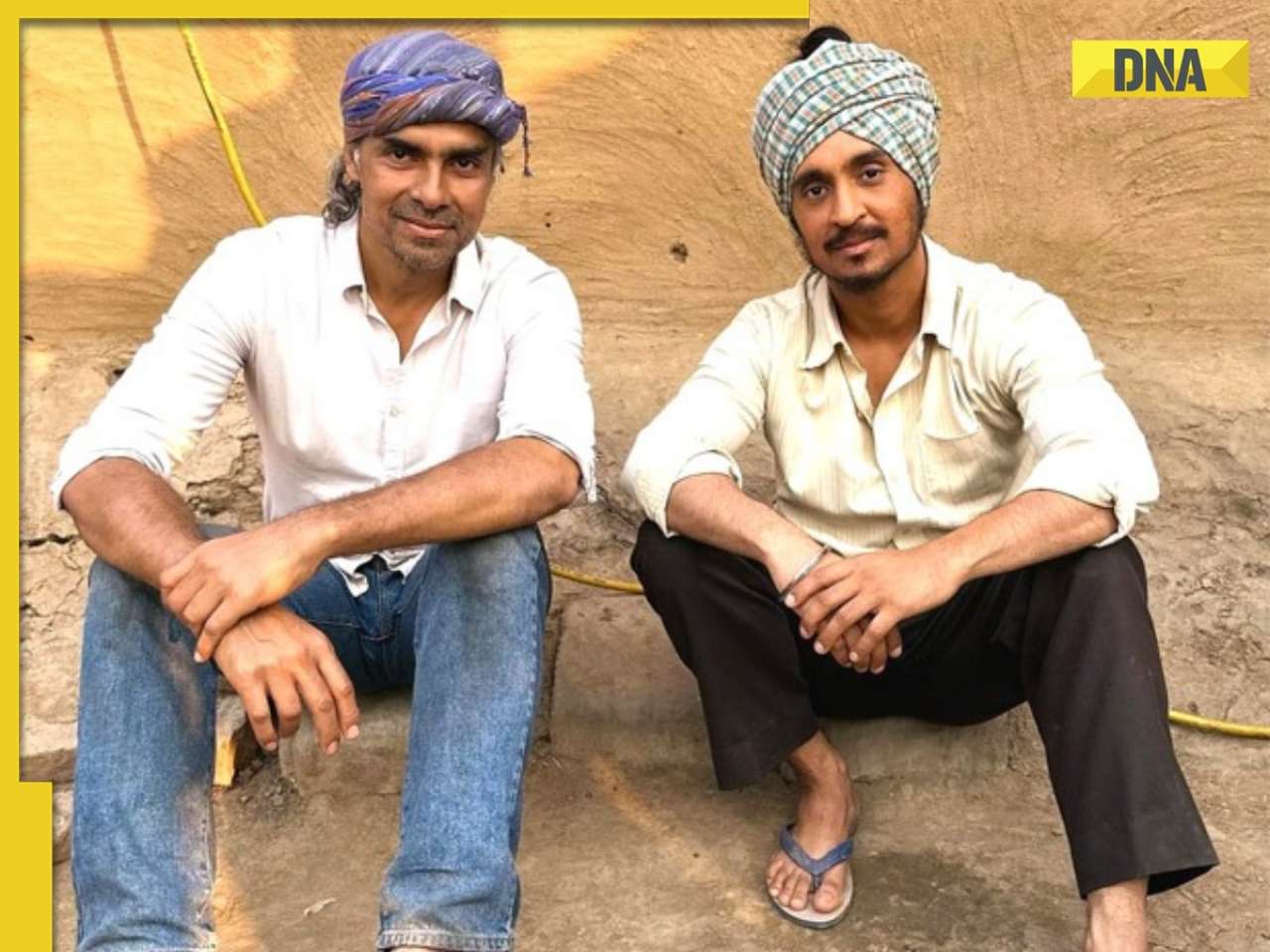



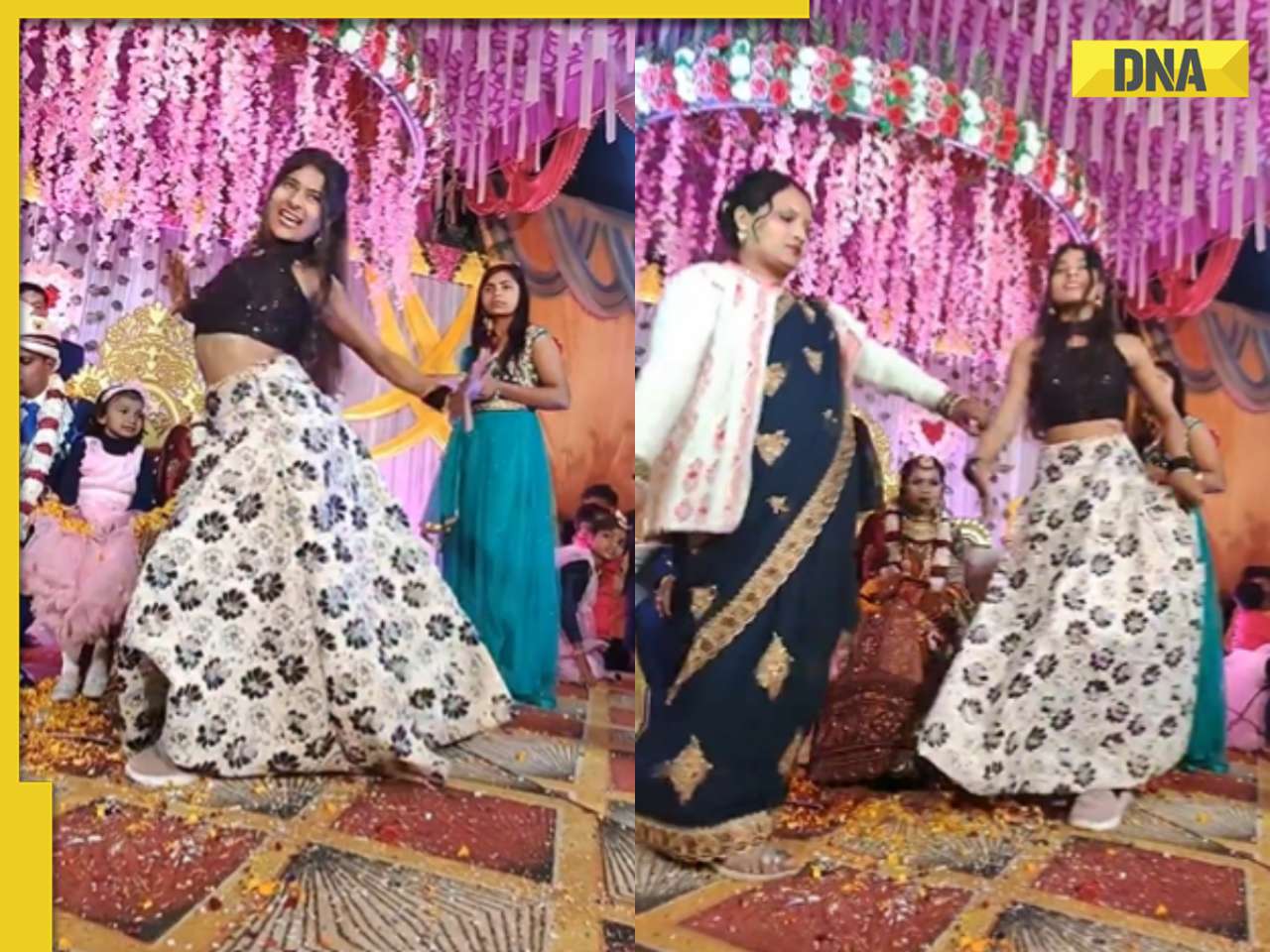




















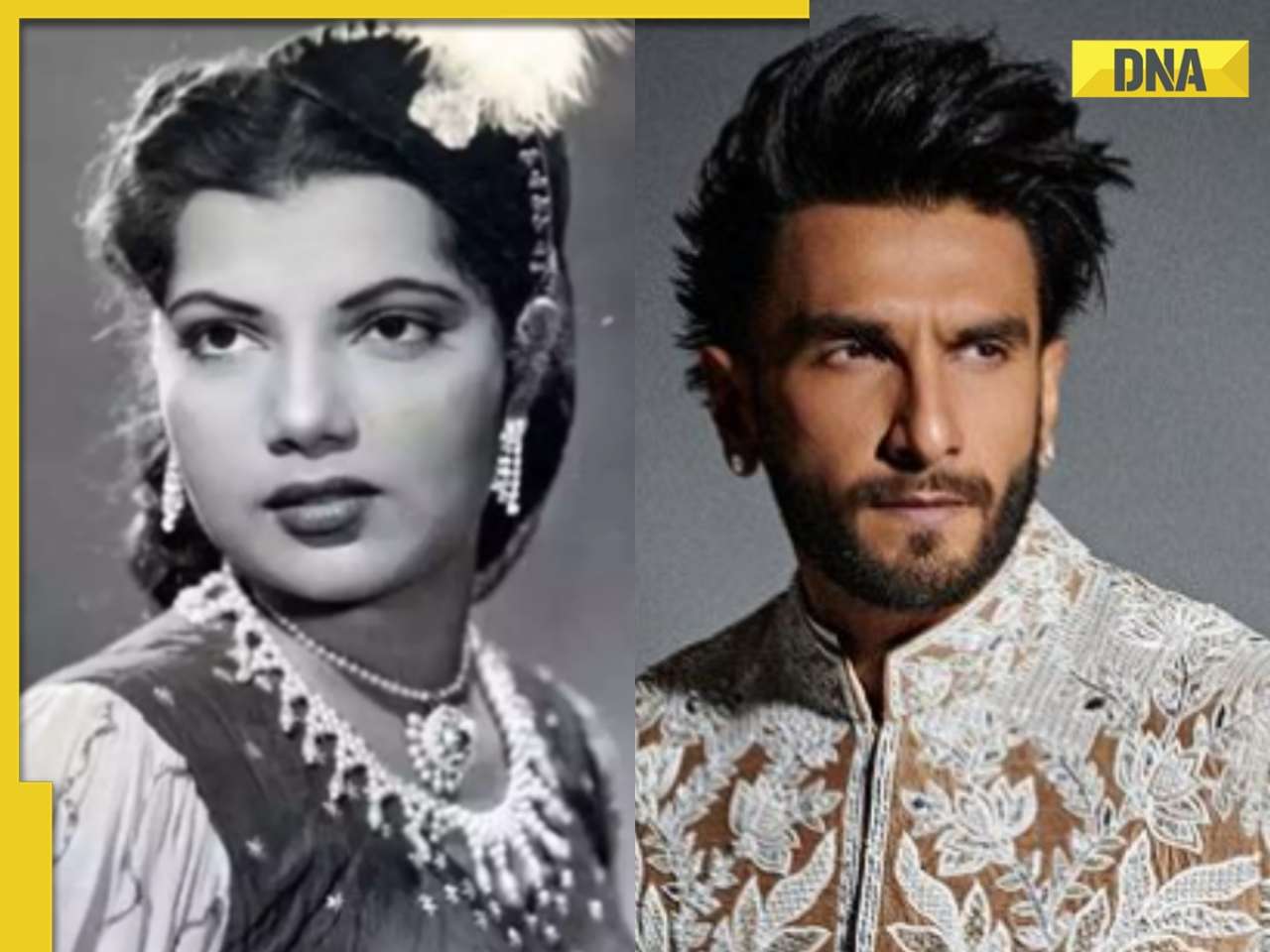


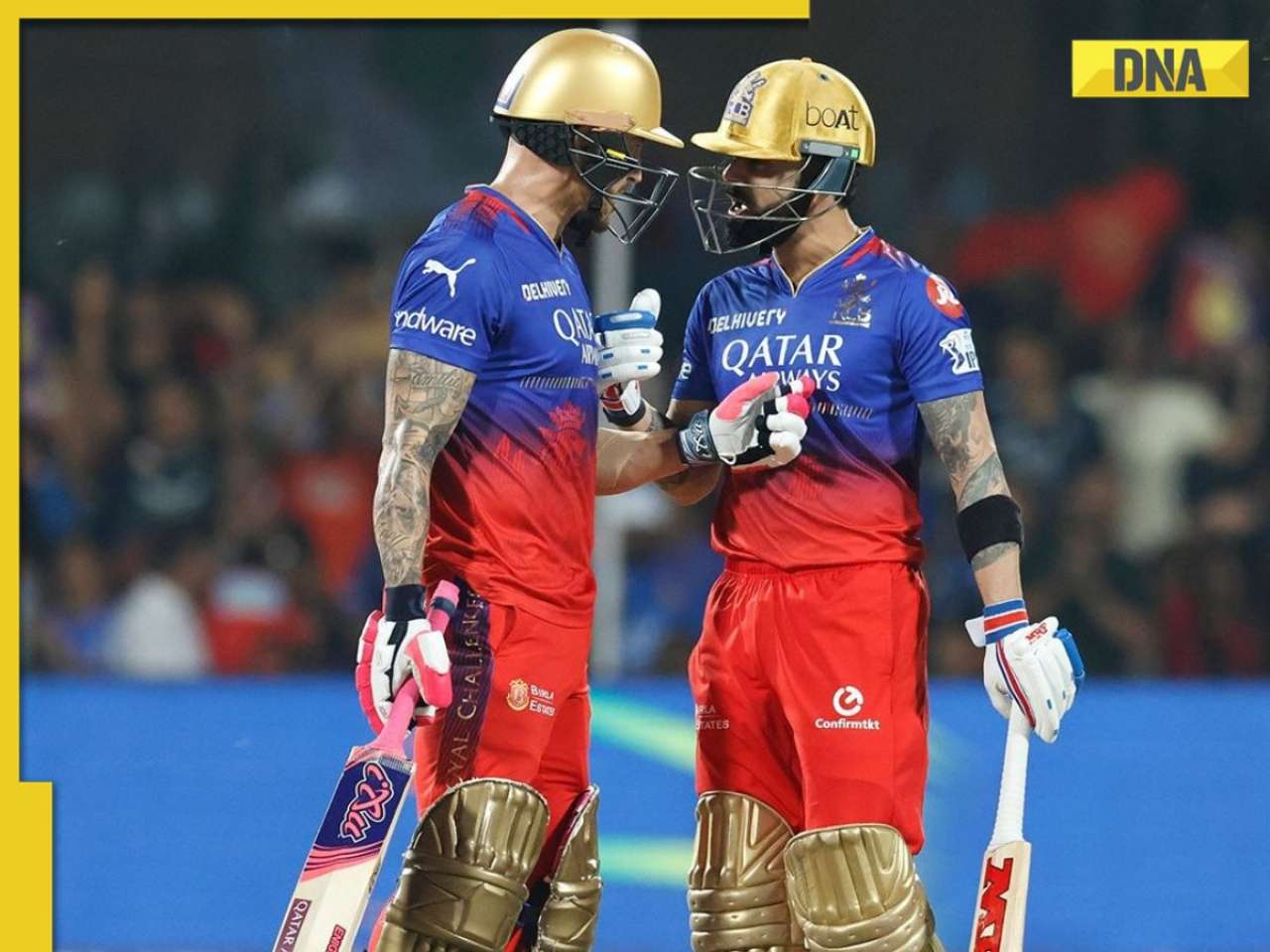
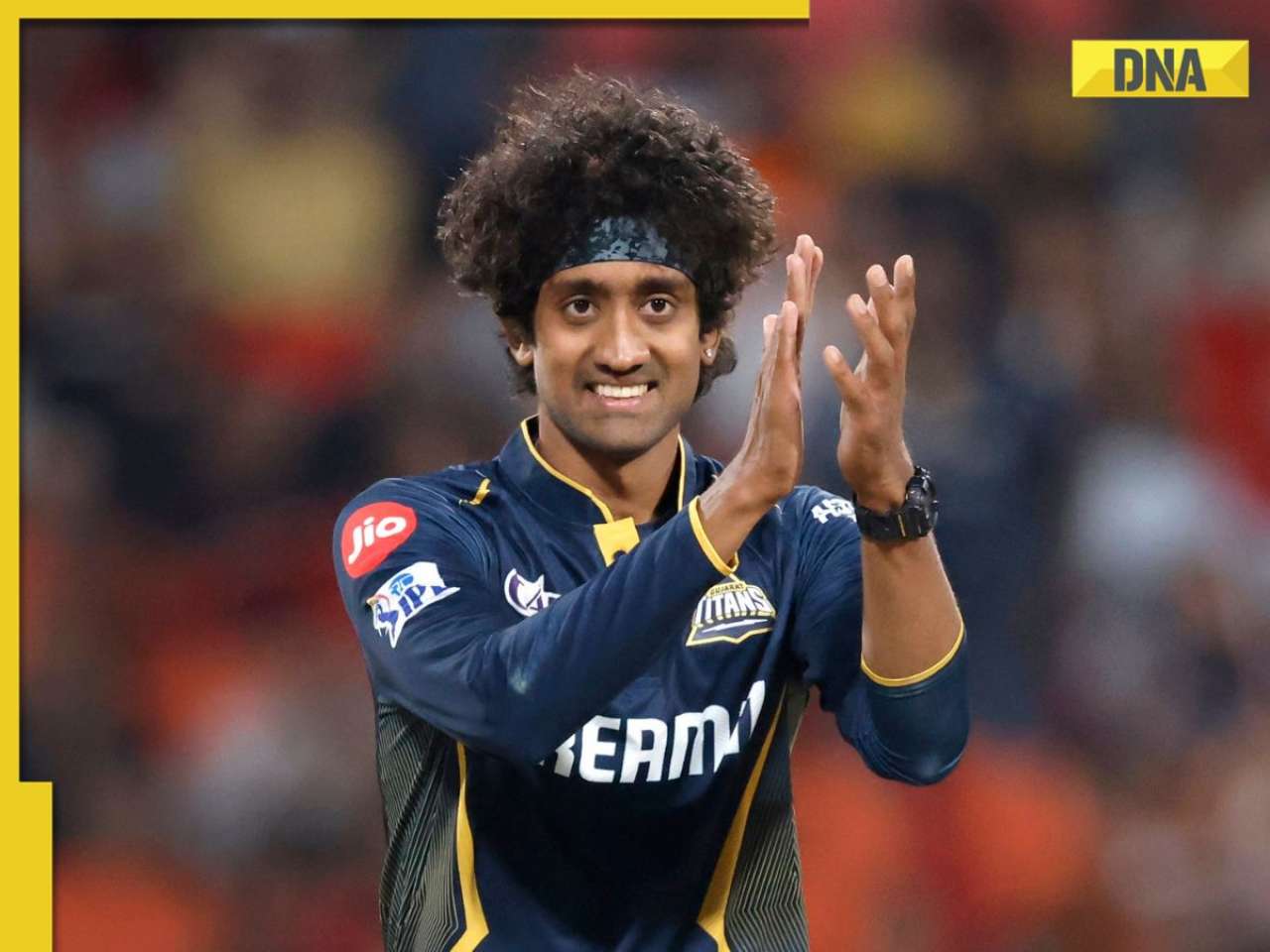

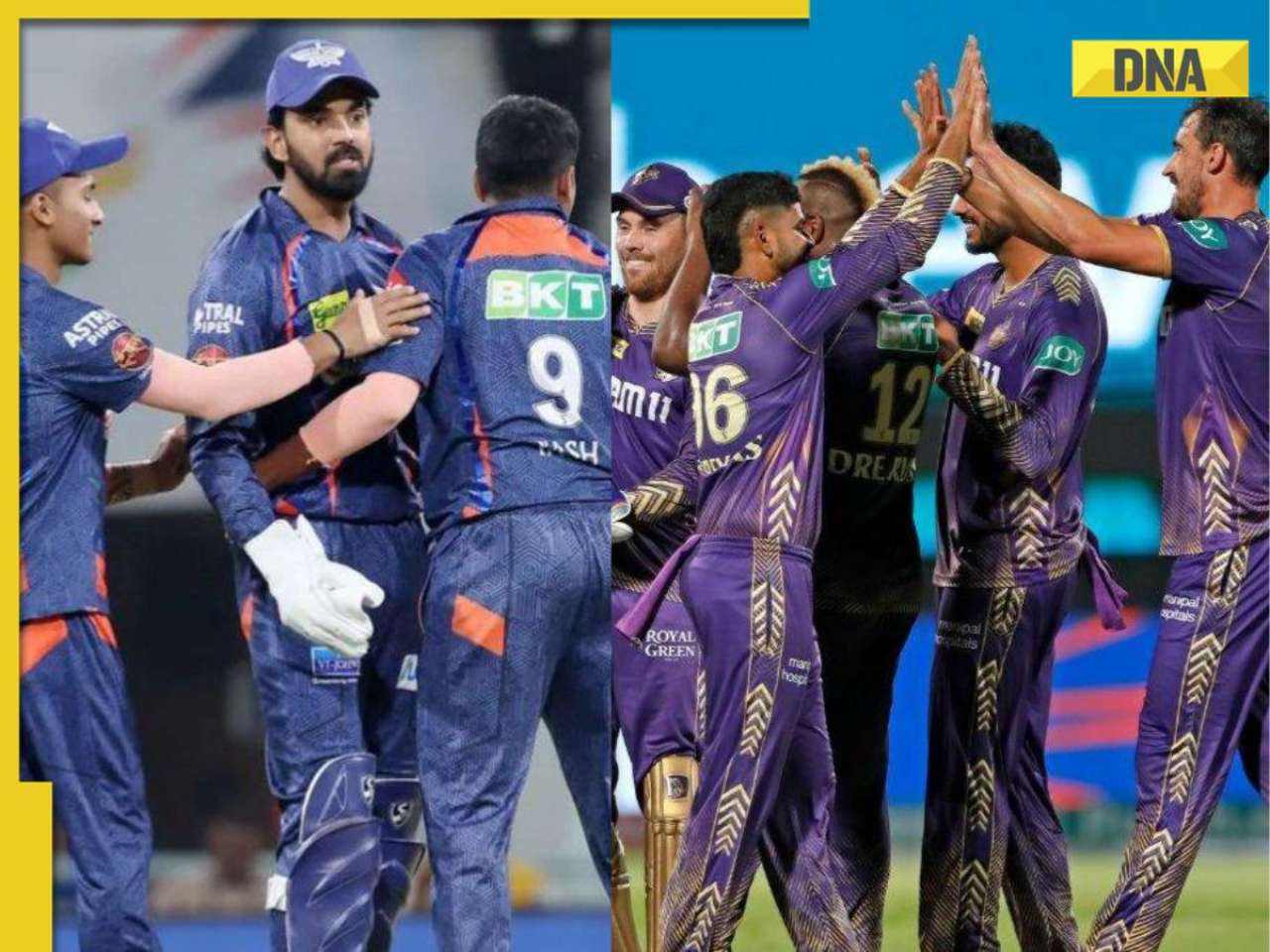
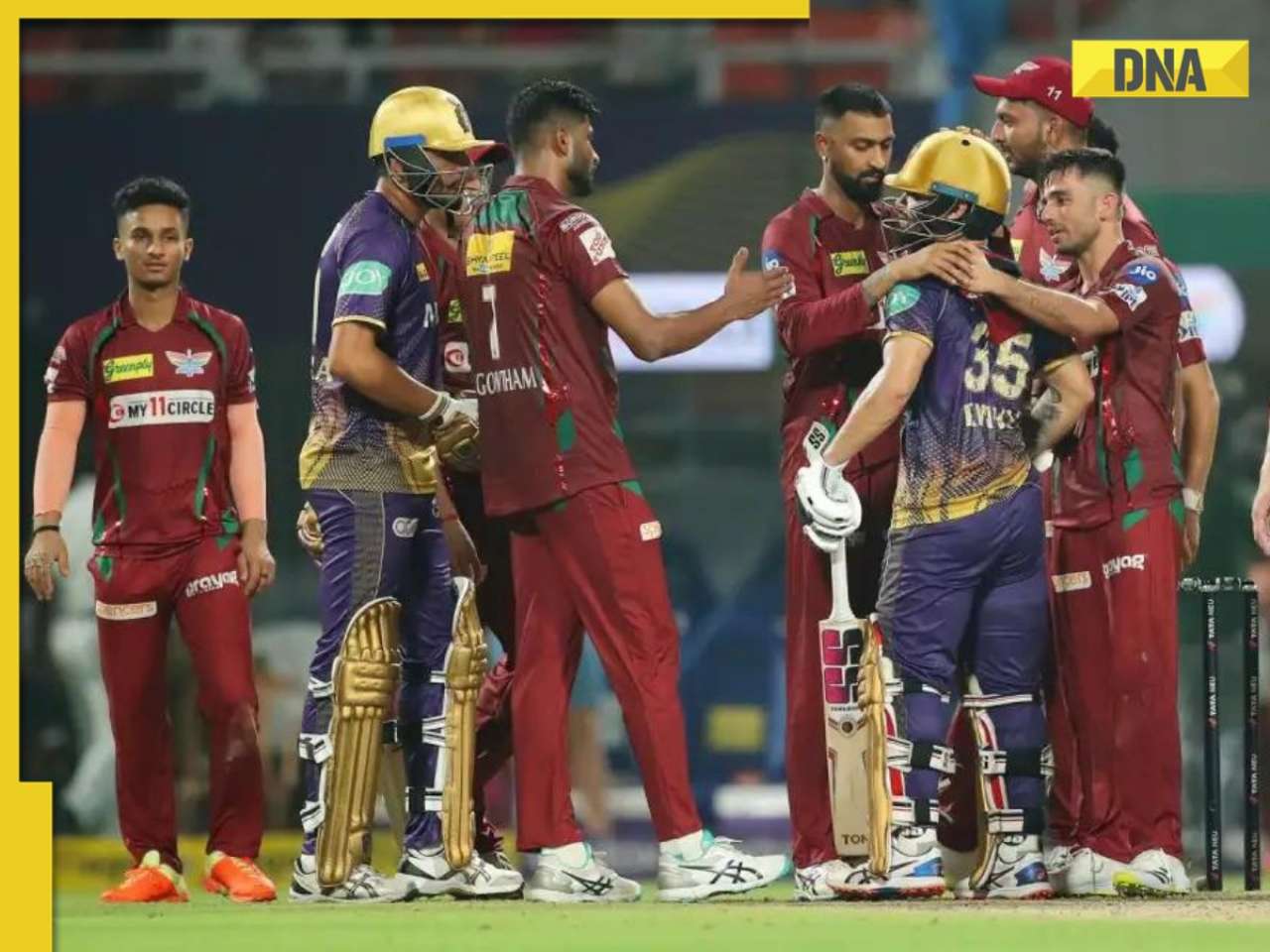
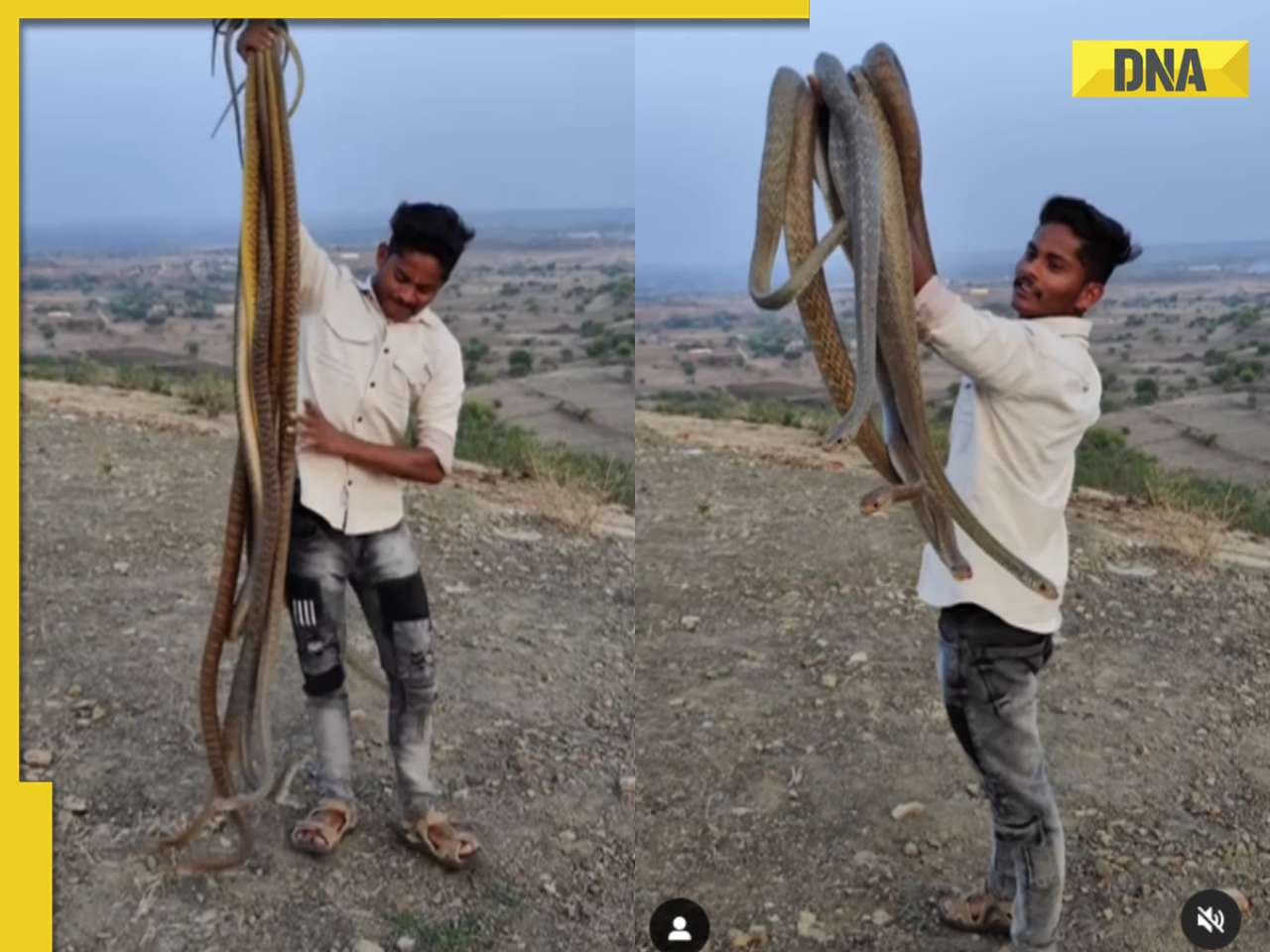



)





)




)
)
)
)
)
)